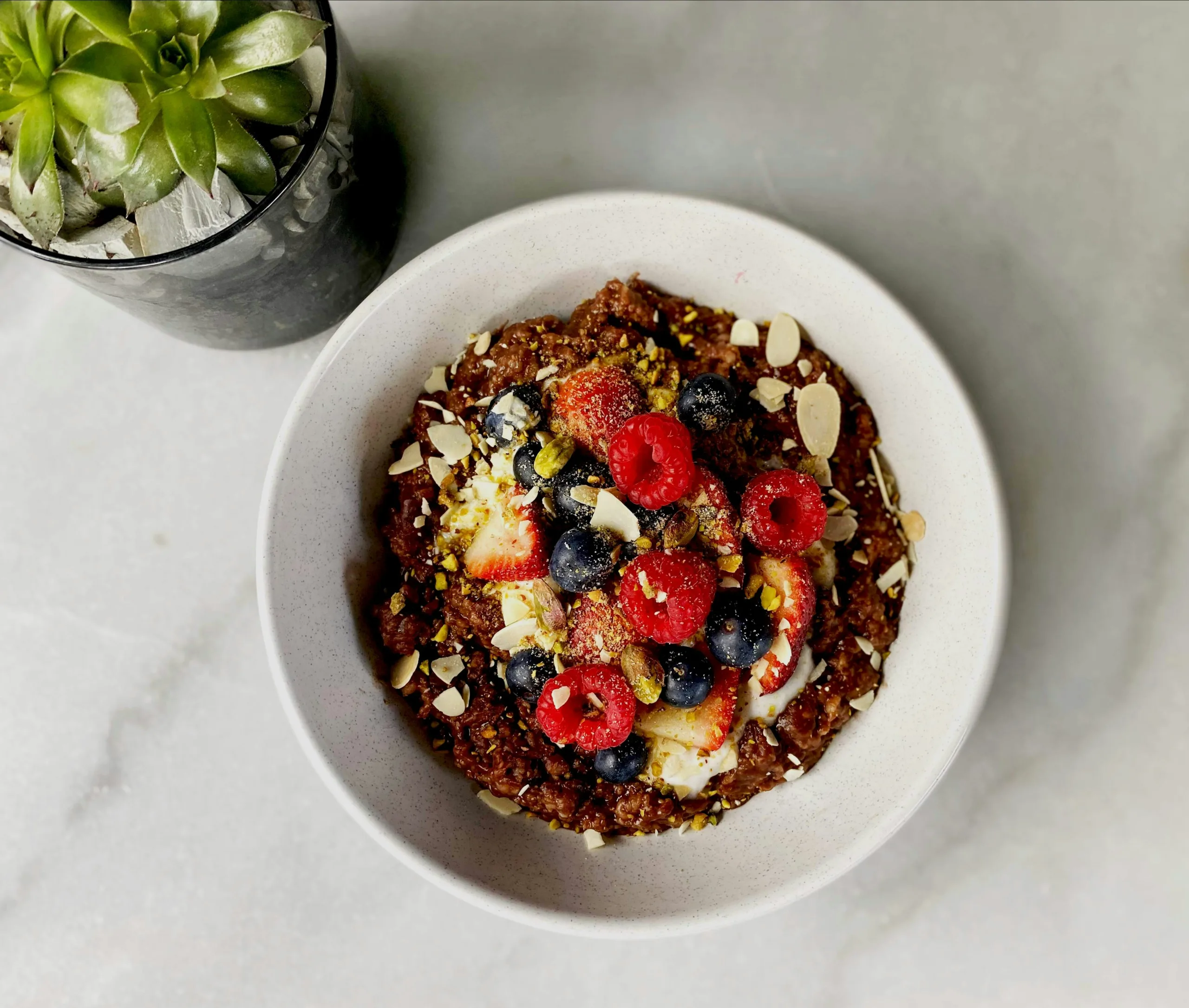Diet trends come and go even quicker than fashion trends, it seems. But just like high-waisted jeans are back (hallelujah!), so too is the 1970s low-carb, high-fat eating plan. Instead of being called “Atkins,” this time, it’s “keto.”
But regardless of the trends that go in and out of vogue, certain things will always remain true:
- Your health is about much more than calories alone
- The quality and quantity of your diet matters
- It’s not just about how much you eat, how often you should eat makes a big difference as well
So today, we’re diving into the hot topic of how often to eat—either to lose weight or maintain it while maximizing your health. First, we’ll compare the trendy concept of intermittent fasting, which involves larger meals within a smaller time frame, to the mini-meal strategy that promotes spreading out your intake into several small nuggets from morning ‘til night. Then we’ll explain how to make any program you choose work for you. Because the one thing we don’t need a study to tell us? It’s essential to find a sustainable eating plan that you’re comfortable sticking with for a lifetime. (AKA not a diet. Sorry, Dr. Atkins.)
RELATED: The Final Answer on How Much Fat to Eat Each Day
Option A: More Frequent, Smaller Meals
This strategy doesn’t mean you’re eating every hour on the hour. Instead, it’s the common lifestyle pattern of consuming three balanced meals (each around 600 calories or so), plus 1-3 snacks (of about 200 calories each). Nutrition pros who promote this lifestyle say that eating more frequently keeps your “gas tank” full enough for sustained, even energy all day. That way, you won’t end up starving by mid-afternoon after fasting all morning, and somehow find yourself at the vending machine at 2 p.m. looking for a quick candy fix.
On the plus side, about 94% of Americans snack daily, according to survey data from Mintel, so this meal and snack strategy would feel natural for many. Plus, the between-meal snacks offer additional ways to sneak in extra nutrition, such as a serving of vegetables and a serving of protein (an apple with an ounce of cheese, for example). Snacks also often mean that you’re never too hungry come meal time, allowing you to take your time and select the quantity and items of food you’re really interested in—not that you feel like you need to fend off the hangries.
When consuming calories across six occasions rather than three per day, blood sugar control may improve as well, according to a study published in Diabetes and Metabolism. Additionally, Research from the National Weight Control Registry also proves that eating breakfast is a common habit among those who lose weight and keep it off—something that might not be possible if you’re following a certain style of less-frequent meal eating (intermittent fasting, for instance).
On the negative side, we’re surrounded by not-so-nutritious snack options everywhere—from supermarket checkout lanes, to gas stations, to office break rooms. And more frequent meals and snacks means more chances to overdo it on the calories. (If you’re a big snacker, just remember that snacks—just like the rest of your meals—should be real food.)
RELATED: The Top 5 Snacks for Weight Loss, According to Science
Option B: Larger, Fewer Meals
This theory suggests that eating two or three larger meals, perhaps constrained to a particular window (if following some form of intermittent fasting) would lead to less mindless grazing and better weight control.
First, the positives: Research in the journal Nutrients found that eating less often may reduce chronic inflammation, and as a result, chronic disease risk, while increasing the lifespan and improving circadian rhythms for better sleep. Eating two or three main meals within a 12-hour window—and sticking to that habit daily, if possible—appeared to be linked to lower risk for obesity and cardiovascular disease, per research in the Journal of Biological Rhythms.
That said, there are some negatives here as well. Hunger is real, and feeling hungry often can trigger prolonged stress. That stress will counteract any anti-inflammatory benefits of this eating pattern. Additionally, setting strict “rules” that don’t fit your lifestyle, such as banning snacks if you’re used to having them, can lead to worsened mood, yo-yo dieting, and possibly, disordered eating.
Eating fewer meals doesn’t necessarily equate to eating fewer calories, either. One study in the journal Metabolism discovered that those who ate one huge meal a day ate just as many calories as those who ate three smaller ones, and those who skip meals show blood sugar changes that hint to increased risk for Type 2 diabetes over time.
The Mixed Messages on How Often to Eat
If you’re looking to lose weight, the question of how often to eat gets more complicated. A recent editorial from the American Society of Nutrition suggests that overeating—at any time of day—has little impact on weight gain at all. The authors suggest that the real culprit is our modern-day standard American diet (SAD) that often includes carbohydrates that fall high on the glycemic index. These high-carb diets cause sharp spikes in insulin secretion and suppression of glucagon. This, in turn, tells our fat cells to store calories rather than use them, which the body reads as, “I should be hungry since I don’t have enough calories for my muscles!”
In this scenario, your how-often-to-eat radar is essentially hijacked by hormones, and your gut tells you to eat more often than you may have if you were fueling up with, say, high-fiber fruits and vegetables with a serving of protein and healthy fat.
Multiple studies have analyzed the impact of eating several smaller meals versus eating bigger ones to see if the mini meals, as some have suggested, ramp up the body’s thermic effect of food (TEF). Eating a meal does raise our metabolic rate a bit, since our bodies work to digest food, but the current scientific consensus appears to be that eating six small meals versus three large meals averages out to almost the exact same results—and no greater overall energy expenditure.
RELATED: Do Negative-Calorie Foods Really Exist?
The Bottom Line on How Often to Eat
As you can see, there’s scientific evidence to support both sides, and additional theories about what to eat, of course. So until we know more, and since the question “how often should you eat?” is a very individual one, the choice is yours.
Try to practice listening to your body; consuming a meal or a snack when you’re hungry, and stopping when you’re full. Before you chow down, it can be helpful to pause, check in and ask yourself:
- “Am I truly hungry, or just thirsty, bored or in an environment full of food options?”
- “When was the last time I ate?”
- “Could a nutritious mini meal, like a piece of fruit with a hard-boiled egg, tide me over until my next meal?”
Try to notice if you feel totally ravenous come dinner time or in the evenings before bed. If so, try to pepper in an extra mini meal or snack earlier in the day. And overall, aim to make all eating occasions rich in high-quality proteins, heart-healthy fats and high-fiber carbohydrates—a combo of all three will keep your energy going strong much longer than a highly-processed, “emergency” snack from the vending machine.
(Image: Shutterstock)






























